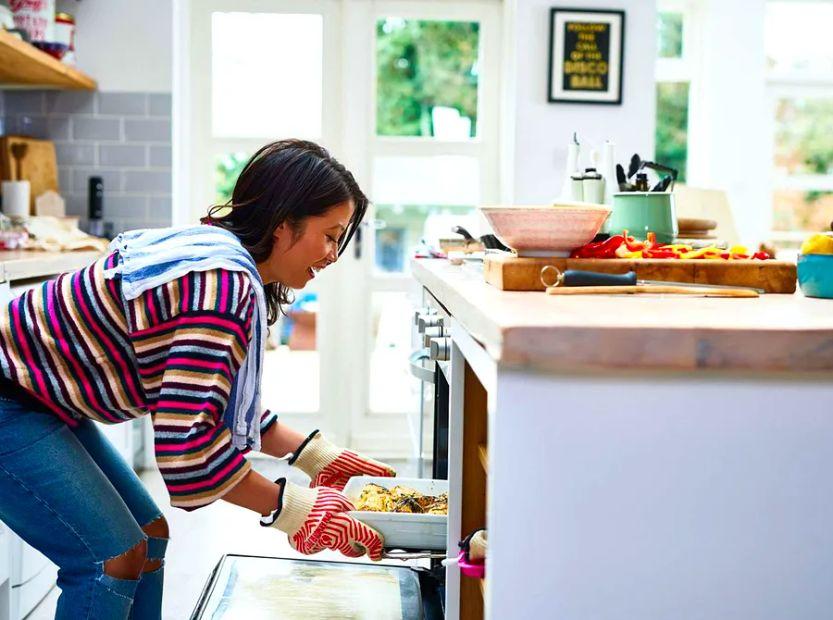How to Cook Several Dishes Simultaneously in the Oven

During roasting season, your oven becomes the hardest worker in the kitchen, handling everything from crispy vegetables to slow-cooked meats and baked treats. Why not take advantage of its capacity (and energy) by preparing multiple dishes at once? You'll cut down on cooking time, or even prep for the week ahead by knocking out the most time-consuming steps. Follow these practical tips and temperature recommendations to make the most of your oven every time you use it. Your future self—and your energy bill—will thank you.
Best Practices for Cooking Multiple Dishes in Your Oven
Don’t Rely on the Oven’s Temperature Dial
Your oven’s temperature gauge can be misleading, fluctuating based on its load or how often the door is opened. For more accuracy, invest in an affordable oven thermometer to ensure the true temperature, and make adjustments accordingly.
Leave Space for Airflow
Make sure there's a couple of inches of space between each dish, as well as between the dishes and the oven walls. This allows for proper air circulation, helping everything cook evenly. Ensure sheet pans are placed flat to prevent any drips from causing smoke or grease fires.
Choose the Right Dish for the Right Food
Select baking pans and dishes that fit the food you're cooking just right—neither too large nor too small—so you don’t waste valuable oven space, and your food gets evenly browned.
Position Dishes Strategically
If one dish requires a roasting temperature of 325°F (165°C) and another needs 375°F (190°C), you can find a middle ground by cooking both at 350°F (175°C). Most ovens tend to be off by around 25°F, so both dishes should cook fine. The only exception is baked goods, which need precise temperatures.
Do a Trial Run
Before turning on the oven, arrange your empty pans inside to check what fits and where, ensuring there's enough space between them. Pans that can handle extra crisping on the bottom should go on the lowest rack. Those that need more top browning should be placed higher up.

What to Prepare at Each Oven Temperature
300°F (150°C)
This temperature is ideal for drying out airy whipped egg whites in a delicate Pavlova or slowly braising tough meats like a hearty Pot Roast (keep the lid on the pot to avoid mixing aromas). You can also use it to roast tomatoes gently or bake apple slices into chips.
350°F (175°C)
This temperature is the go-to for most recipes, as it’s hot enough to brown foods but not so high that it burns them. It’s perfect for baking Soft Chocolate Chip Cookies, preparing Broccoli Casserole, or roasting a simple chicken.
400°F (200°C)
This temperature is perfect for fish and vegetables. Try it for Parchment-Baked Salmon or other delicate fish fillets (check for doneness after 10 minutes). Roast chopped vegetables, flipping halfway for even crispness. Wrap garlic heads in foil for Roasted Garlic, and do the same for whole beets and sweet potatoes.
450°F (230°C)
This high heat creates a crispy crust on breads and pizzas, such as Brick-Oven Pizza (Brooklyn Style). It also gives perfect crispy edges to Roasted Rosemary Onion Potatoes. Be cautious at this temperature: turn on the exhaust fan and have oven mitts ready for safety.

1

2

3

4

5
Evaluation :
5/5